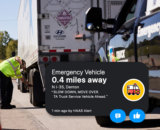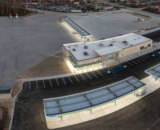Hours-of-service requirements, electronic logging devices and e-commerce are all changing professional drivers’ operating environment, and the changing market dynamics are resulting in new opportunities for truckstop and travel plaza operators. During NATSO Connect, NATSO President and CEO Lisa Mullings sat down with Dave Manning, president of TCW Inc. and Immediate Past Chairman of the American Trucking Associations as well as Dan Murray, vice president of the American Transportation Research Institute, to discuss the latest trends affecting truck drivers.
Manning told attendees that hours-of-service requirements rather than the ELD mandate have created some challenges for drivers. “The angst was really over the loss of flexibility rather than how you record that," he said, adding that the trucking industry was much more prepared to adopt ELD requirements than was initially predicted.
Because drivers are increasingly pressed for time, truckstops and travel plazas have focused on increasing their speed of service, Mullings said.
Infrastructure funding remains a concern for those in the transportation industry, and Murray said he is worried that the more desperate lawmakers become for funding solutions, the more likely they are to turn to tolls.
Manning said states will look for funding as their needs increase. “I think the bigger risk on tolls is if the federal government doesn’t do anything, the states will,” he said. “The President has to take the lead on this.”
Murray said tolling burns 20 to 30 percent of fees raised in administrative costs. Manning equated tolling to “kicking the can down the road” and noted that there is a cost to doing nothing, which comes from congestion and damage to equipment.
During the session, panelists also discussed the future of electric and autonomous vehicles, as well as the driver shortage and the role female and younger drivers could play in increasing the number of drivers entering the industry.
Overall the panelists said they expect 2019 to be a good year for the trucking industry as well as truckstops and travel plazas. “On paper, we're historically supposed to have a recession every five to seven years. We should we in one right now, and the economy is amazing,” Murray said.
Photo credit: Lisa Webb
Subscribe to Updates
NATSO provides a breadth of information created to strengthen travel plazas’ ability to meet the needs of the travelling public in an age of disruption. This includes knowledge filled blog posts, articles and publications. If you would like to receive a digest of blog post and articles directly in your inbox, please provide your name, email and the frequency of the updates you want to receive the email digest.

